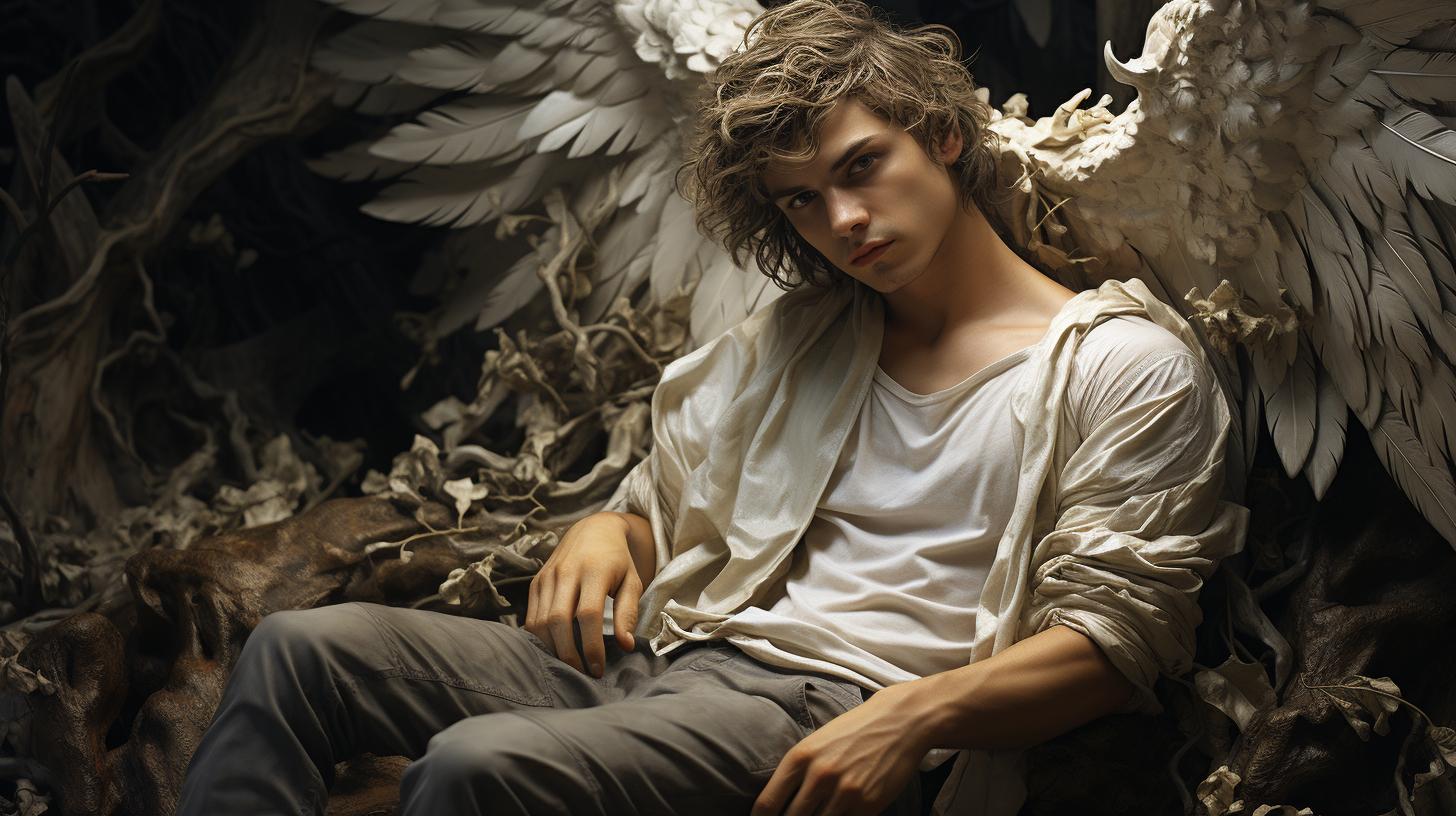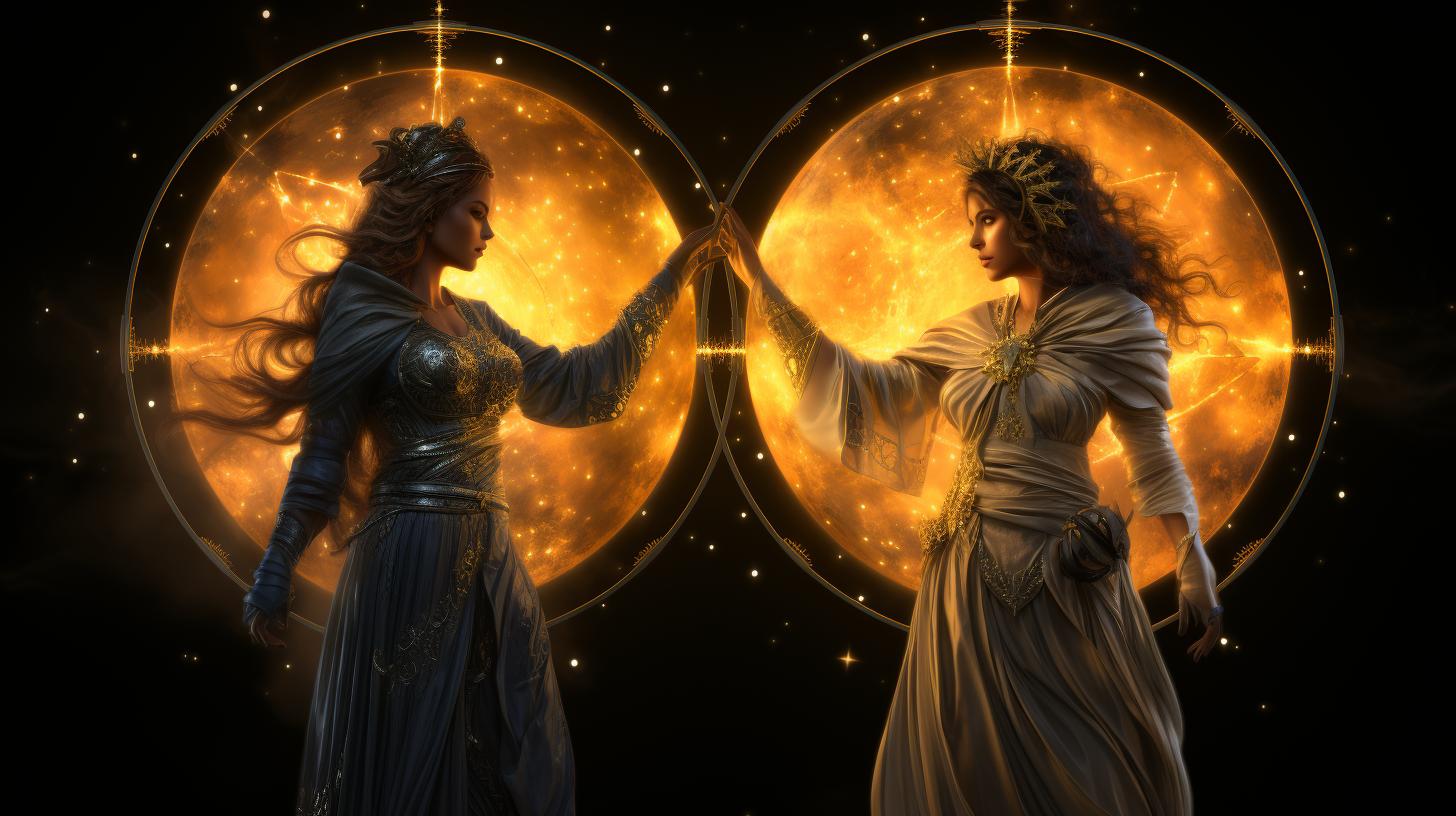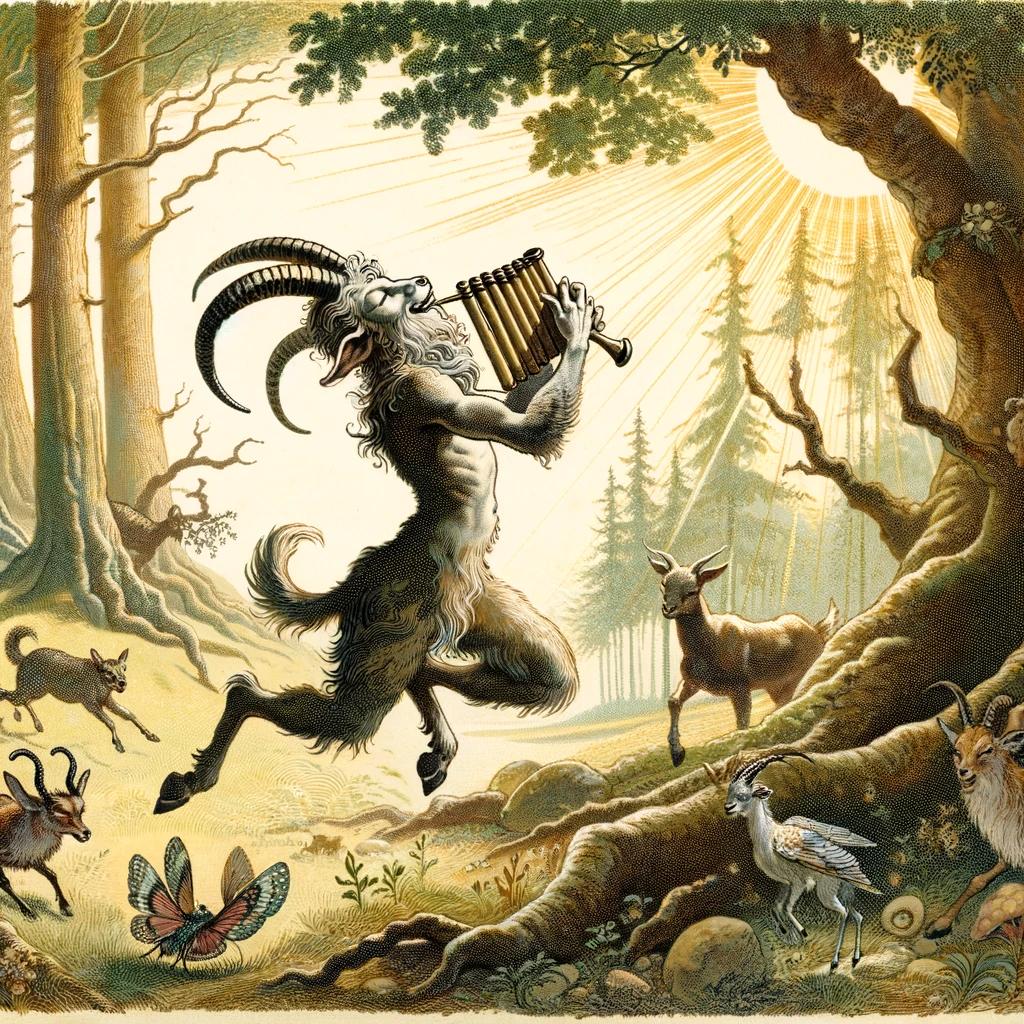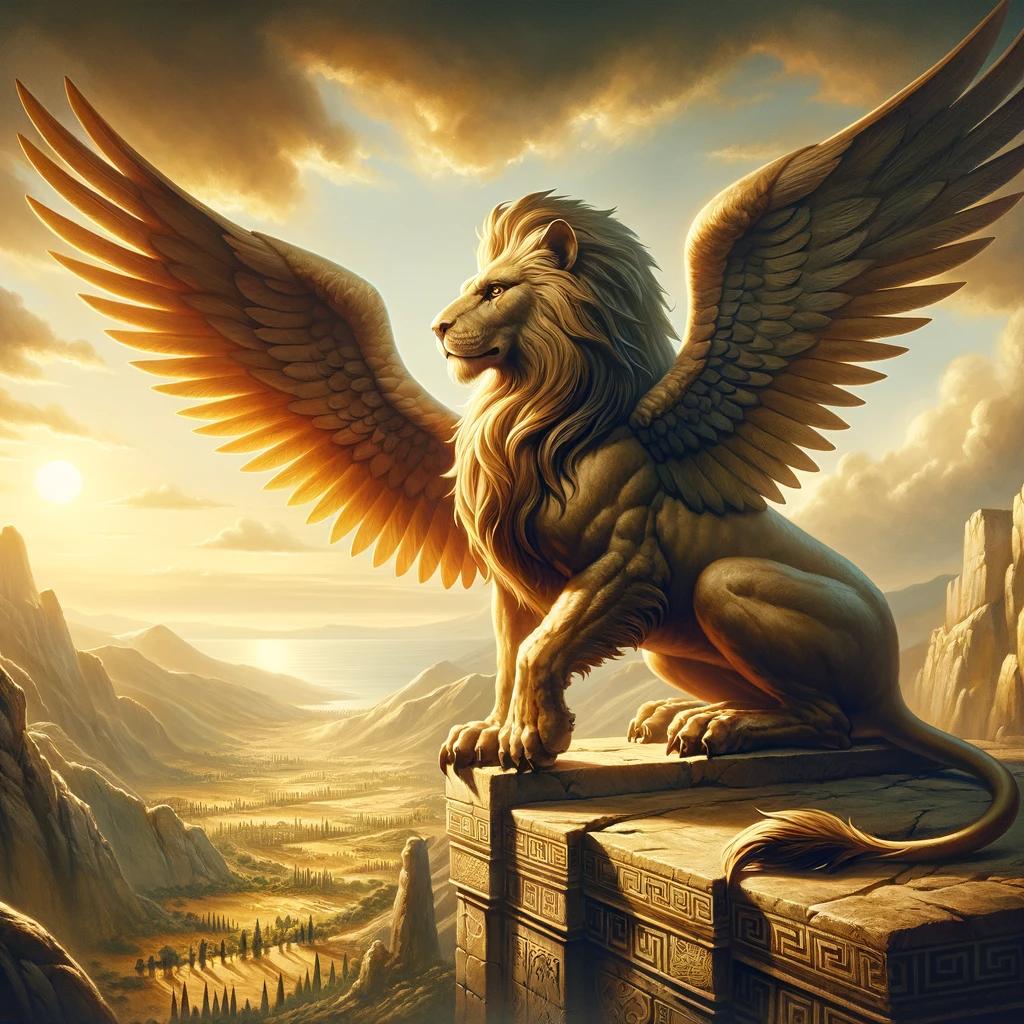Anteros: The Greek God of Mutual Love and Divine Vengeance

Anteros, the Greek god of mutual love and divine vengeance, is a significant figure in Greek mythology. Born as the son of Ares and Aphrodite, he embodies the concept of reciprocated love and represents a counterbalance to his passionate brother Eros. Anteros is often depicted in ancient art, including the famous statue in London, which is frequently mistaken for Eros. The story of Timagoras and Meles contributed to Anteros’ worship by foreign residents in Athens.
Explore the origins, role, depictions, and modern interpretations of Anteros in this comprehensive article.
The Origins of Anteros in Greek Mythology
In Greek mythology, Anteros is a significant deity who embodies the concept of reciprocated love and acts as the avenger of unrequited love. This section explores the parentage of Anteros and the alternative names by which he is known.
The Parentage of Anteros: Ares and Aphrodite
The parentage of Anteros traces back to the divine union of two prominent Greek deities – Ares, the god of war, and Aphrodite, the goddess of love and beauty.
As their son, Anteros inherits aspects of both his parents’ characteristics, combining power and passion with love and beauty.
Alternative Names for Anteros: Mars and Venus
The names by which Anteros is identified vary in different texts and cultures. In Greek mythology, he is known as Anteros, while in Roman mythology, he is often associated with the names Mars and Venus, corresponding to the Roman counterparts of Ares and Aphrodite. These alternative names reflect the cross-cultural influences and adaptations of these ancient myths.
The Role and Symbols of Anteros in Greek Mythology
Anteros, a prominent figure in Greek mythology, holds significant roles and symbols that distinguish him from his passionate brother, Eros. As the god of corresponded love, Anteros embodies the deep and mutual affection found in lasting relationships.
Unlike Eros, who inspires chaotic and passionate love, Anteros focuses on fostering meaningful connections and long-term commitments.
Anteros as the God of Corresponded Love
Anteros symbolizes the beauty of love that is reciprocated and cherished by both individuals involved. His influence extends beyond fleeting infatuations, as he represents the profound emotional bond shared between two people.
Anteros encourages love in its purest form, devoid of selfish desires, and highlights the importance of nurturing a relationship through understanding, loyalty, and selflessness.
When Anteros’ presence is felt in a relationship, it signifies a balanced and reciprocated affection that brings harmony and fulfillment.
He encourages lovers to embrace both the joys and challenges of their connection and to build a deep emotional foundation that withstands the test of time.
Symbolism of Anteros’ Corresponded Love
- Long-lasting emotional connection
- Unconditional affection and devotion
- Reciprocity and equality in love
- Commitment and loyalty in relationships
Anteros as the Avenger of Unrequited Love
While Anteros represents mutual love, he also serves as the avenger of unrequited love.
This aspect of his character arises from his compassion for those who suffer heartbreak and rejection. Anteros punishes those who disregard or dismiss the sincere and genuine advances of others, ensuring that justice prevails in matters of the heart.
Anteros’ intervention serves as a deterrent, reminding individuals to treat love and the feelings of others with kindness and respect. His role as an avenger reinforces the need for empathy and consideration in all romantic endeavors, emphasizing the importance of valuing and reciprocating the affection bestowed upon us.
Symbolism of Anteros’ Avenging Love
- Protection of vulnerable hearts
- Justice and fairness in love
- Consequences for those who disregard others’ emotions
- Elevation of empathy and consideration in relationships
The Story Behind Anteros’ Worship in Athens
The worship of Anteros in Athens is rooted in the fascinating incident involving Timagoras and Meles.
This incident played a crucial role in garnering adoration for Anteros among the foreign residents of Athens. Let’s delve into the intriguing story that led to the rise of Anteros’ following in this ancient city.
The Incident of Timagoras and Meles
Timagoras, an esteemed poet from Abdera, visited Athens, hoping to gain recognition and admiration for his lyrical prowess. As he recited his verses at the City Dionysia festival, he caught the attention of Meles, a renowned local playwright.
Mesmerized by the poet’s words, Meles approached Timagoras after the performance to express his admiration and desire for a deeper connection. However, Timagoras, overcome by his own vanity, arrogantly dismissed Meles and rejected his advances.
Little did Timagoras know that his callous rejection would bring about his downfall. In an unexpected turn of events, the gods intervened, and Anteros, the avenger of unrequited love, descended upon Timagoras.
Struck by Anteros’ divine wrath, Timagoras fell sick and was plagued by misfortune. The dramatic consequences of Timagoras’ actions served as a powerful reminder of the importance of honoring and reciprocating love.
Anteros’ Adoration by Foreign Residents in Athens
News of Timagoras’ fateful encounter with Anteros spread throughout Athens like wildfire, captivating the hearts of both locals and foreigners alike. The foreign residents, deeply moved by Anteros’ role as the advocate of mutual love, recognized in him a deity who championed harmonious relationships and long-lasting affection.
Enchanted by the deity’s influence, foreigners living in Athens began to worship Anteros fervently, erecting altars and offering prayers to seek his blessings. They found solace and hope in Anteros’ emphasis on mutual and selfless love, viewing him as a guiding force in their own relationships and interactions.
As the cult of Anteros grew amongst the foreign community, his worship became a significant aspect of religious life in Athens. It symbolized the universal appeal of love that transcended cultural boundaries.
In conclusion, the incident involving Timagoras and Meles acted as a catalyst for the worship of Anteros in Athens. The foreign residents, deeply affected by the power of this divine entity, recognized in Anteros a deity who epitomized the virtues of reciprocated love.
Through their devotion, they embraced Anteros as a symbol of harmonious relationships and celebrated the essence of lasting, unselfish affection.
- Timagoras, an esteemed poet, dismisses the advances of Meles due to his own vanity
- Anteros, the avenger of unrequited love, brings misfortune upon Timagoras as a consequence
- The story of Timagoras and Anteros spreads in Athens, captivating the locals and foreigners
- Foreign residents in Athens admire Anteros’ role in advocating mutual and selfless love
- They begin to worship Anteros fervently, erecting altars and offering prayers
- The cult of Anteros becomes significant in the religious life of Athens’ foreign community
- Anteros symbolizes universal love that transcends cultural boundaries
Depictions of Anteros in Ancient Greek and Roman Art
The artistic representations of Anteros in ancient Greek and Roman art provide insights into the significance and symbolism attributed to this divine figure.
These depictions highlight both Anteros’ relationship with his brother Eros and other unique portrayals that showcase his distinct attributes.
Anteros and Eros: The Scales of Love
One prevalent motif in the artistic depictions of Anteros is his association with Eros through the imagery of scales, symbolizing the contrasting aspects of love. These depictions often portray Anteros and Eros standing on opposite ends of the scales, representing the balance between reciprocated and unrequited love.
Through this visual metaphor, artists aimed to convey the importance of mutual love and the consequences of rejecting someone’s affection. Anteros is depicted as the counterforce to Eros, emphasizing the significance of balanced and lasting relationships rather than impulsive passion.
Other Artistic Representations of Anteros
Beyond the scales of love, Anteros is also depicted in various other artistic scenes and forms. Sculptures and reliefs portray him as a youthful and winged figure, often adorned with attributes such as a bow and arrows, symbolizing his role in inspiring and enforcing love.
Some portrayals showcase Anteros in action, as he punishes those who disregard or scorn the advances of others, reminding individuals of the importance of treating love with respect and consideration. These depictions reinforce Anteros’ role as the avenger of unrequited love and defender of genuine, reciprocated affection.
Anteros’ presence in ancient Greek and Roman art is a testament to the cultural significance and understanding of love and its various dimensions. These artistic representations showcase the value placed on mutual love and the consequences of rejecting or mistreating this sacred emotion.
The Famous Anteros Statue in London
The city of London is home to an iconic statue that often captures the attention of visitors and locals alike. Standing tall in Piccadilly Circus, the statue portrays a Greek god gracefully shooting an arrow.
However, there is a common misconception surrounding this statue that needs to be cleared up.
Debunking the Common Misconception: Anteros, not Eros
Contrary to popular belief, the statue in question does not depict the well-known god of love, Eros. Instead, it represents his lesser-known brother, Anteros. Anteros, the Greek god of mutual love and unselfish affection, takes center stage in this exquisite sculpture.
The Anteros statue was designed by Sir Alfred Gilbert and unveiled in 1893. Its creation was inspired by a poem by Lord Alfred Tennyson called “The Statue of Love.” The intention behind the statue was to celebrate the concept of selfless love and charity.
Symbolism of the Shaftesbury Memorial Statue
The Anteros statue is part of the Shaftesbury Memorial Fountain, also known as the Eros Fountain. The fountain was built in honor of the 7th Earl of Shaftesbury, an English politician and philanthropist who dedicated his life to improving the conditions of the working class in Victorian London.
The symbolism behind the Shaftesbury Memorial Statue is profound. Anteros, depicted as a youthful and ethereal figure, represents the power of reciprocated love and the consequences of neglecting or rejecting the affections of others.
This message aligns perfectly with the philanthropic ideals of the 7th Earl of Shaftesbury.
The statue itself is a magnificent representation of Anteros, with his wings spread wide and his bow drawn, ready to shoot an arrow of mutual love.
Its intricate details and majestic presence make it a captivating sight for any admirer of ancient Greek mythology and art.
As you stroll through Piccadilly Circus, take a moment to appreciate the beauty and profound meaning behind the Anteros statue.
It serves as a reminder of the importance of mutual love, compassion, and respect in our lives, and the significance of acknowledging and cherishing the affections we receive.
- Unveiled in 1893, the Anteros statue in Piccadilly Circus is often mistaken for Eros, the god of love.
- Designed by Sir Alfred Gilbert, the statue represents Anteros, the Greek god of mutual love and unselfish affection.
- The statue is part of the Shaftesbury Memorial Fountain, honoring the philanthropic work of the 7th Earl of Shaftesbury.
- Symbolizing the power of reciprocated love, the Anteros statue serves as a reminder of the importance of mutual affection.
Anteros in Modern Understanding and Interpretations
Anteros’ Influence in Western Art, Literature, and Philosophy
Anteros, the Greek god of mutual love and divine vengeance, has left a lasting impact on various facets of Western culture.
In art, Anteros has been depicted in numerous paintings, sculptures, and other artistic mediums. Artists have explored the themes of reciprocated love and the consequences of unrequited affection through their interpretations of Anteros.
Additionally, Anteros’ influence can be seen in literary works, where authors have drawn inspiration from his role as the avenger of unrequited love or explored the concept of counter love. Philosophers, too, have reflected on Anteros’ symbolism and its implications for understanding the complexities of human relationships.
The Concept of Counter Love and the Erotes
One of the intriguing aspects of Anteros is his association with counter love, distinct from the passionate and chaotic love represented by his brother Eros. Counter love emphasizes long-term relationships and deeper emotional connections, highlighting the importance of mutual and selfless affection.
Anteros’ existence as the counterbalance to Eros signifies the understanding that love can manifest in diverse ways, beyond mere passion. This concept has captivated philosophers, psychologists, and scholars, who have delved into the intricacies of love and its various forms with Anteros serving as a compelling symbol.
The Myth of Eros and Psyche
A well-known myth involving Anteros is the story of Eros and Psyche. In this tale, Psyche, a mortal princess, falls in love with Eros, the god of passionate love.
However, their relationship encounters challenges, including Psyche’s curiosity and her betrayal of Eros’ trust. The myth explores themes of love, trust, and the consequences of disregarding the emotional bonds between individuals.
And while Anteros is not a central character in this particular myth, his role as the god of mutual and reciprocated love adds depth to the narrative, highlighting the significance of balanced and harmonious affection in relationships.
- Anteros’ impact on Western art can be seen in numerous paintings, sculptures, and other artistic mediums.
- Authors have drawn inspiration from Anteros’ role and symbolism in their literary works.
- Anteros’ representation as the god of counter love has intrigued philosophers and scholars, sparking discussions on diverse forms of affection.
- The myth of Eros and Psyche explores themes of love, trust, and the consequences of disregarding emotional bonds.
Anteros: The Greek God of Lasting Love and Unselfish Affection
Anteros, a significant deity in Greek mythology, personifies lasting love and unselfish affection.
Unlike his passionate brother Eros, Anteros symbolizes a love that goes beyond superficial attraction and focuses on deep emotional connections and long-term relationships.
Anteros encourages mutual and selfless love among individuals, emphasizing the importance of reciprocated affection and genuine emotional bonds.
He stands as a divine reminder to cherish and nurture meaningful connections, fostering lasting and fulfilling relationships in the realm of love.
This compassionate aspect of Anteros sets him apart from the chaotic and tumultuous nature associated with Eros. While both gods possess the ability to shoot arrows, Anteros utilizes his powers to punish those who reject or disregard genuine expressions of love.
Throughout Greek mythology, Anteros is celebrated as a force that supports and cultivates enduring and unselfish relationships. His presence serves as a guiding principle for individuals seeking true love built on respect, loyalty, and empathy.
In ancient works of art, Anteros is often depicted alongside Eros on the scales of love, symbolizing the delicate balance necessary for mutual affection. The famous statue in London, often mistaken for his brother Eros, serves as a testament to Anteros’ influence and his embodiment of charitable and selfless love.
Even in modern times, Anteros’ legacy endures. His teachings and symbolism continue to permeate Western art, literature, and philosophy, inspiring individuals to seek profound connections and foster enduring love based on mutual understanding and selflessness.
The mythology of Eros and Psyche further explores the complexities of love and illustrates the fundamental role Anteros plays in promoting lasting and satisfying relationships. These timeless tales remind us of the significance of nourishing companionships built on trust, empathy, and genuine care.
In summary, Anteros, the Greek god of lasting love and unselfish affection, encourages deep emotional connections and long-term relationships. Functioning as the divine counterbalance to his brother Eros, Anteros promotes mutual and selfless love.
Through his punishing arrows, he emphasizes the importance of cherishing and reciprocating true affection. Represented in ancient art alongside Eros, Anteros serves as a reminder of the delicate balance required in love.
His influence extends to modern times, inspiring individuals to seek enduring connections based on empathy, understanding, and mutual care.
Notable Myths and Stories Involving Anteros
Calydonian Boar: Anteros’ Role in the Hunt
In the myth of the Calydonian Boar, Anteros played a significant role alongside other renowned heroes. King Oeneus of Calydon had forgotten to honor the goddess Artemis with a sacrifice, which angered her.
In her wrath, Artemis sent a monstrous boar to ravage the land. To protect his kingdom, Oeneus called upon the bravest heroes, including Anteros, to participate in the hunt for the Calydonian Boar.
Anteros contributed with his divine presence, inspiring the hunters with disciplined and mutual love towards their comrades. His unwavering commitment to lasting love and unselfish affection served as a source of inspiration for the heroes during this perilous mission.
Medusa, Minotaur, and Nemean Lion: Anteros’ Connections
While Anteros is not directly involved in the myths surrounding Medusa, the Minotaur, and the Nemean Lion, his thematic connection to mutual love and vengeance can be identified in these tales.
These iconic creatures, each with their own tales of tragedy and unrequited love, are often depicted as the recipients of divine punishment. Anteros’ presence can be interpreted as a silent force that ensures justice is served and those who wrong others face the consequences.
Though not directly mentioned, his influence can be seen as a reminder that love, when not reciprocated, can lead to destructive outcomes.
In Greek mythology, the stories of the Calydonian Boar, Medusa, the Minotaur, and the Nemean Lion highlight the interconnectedness of various gods, goddesses, and mythical creatures.
Anteros, with his role as the god of mutual love and divine vengeance, brings an additional layer of depth to these narratives, portraying the importance of understanding the consequences of love and the repercussions of its absence.




















